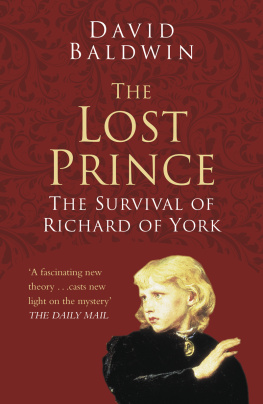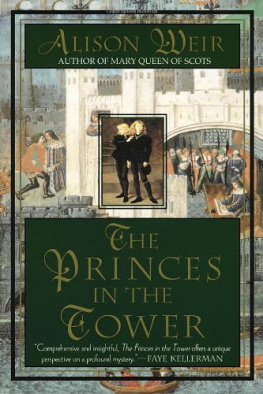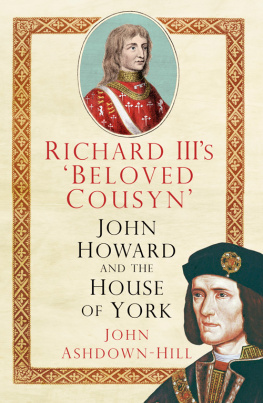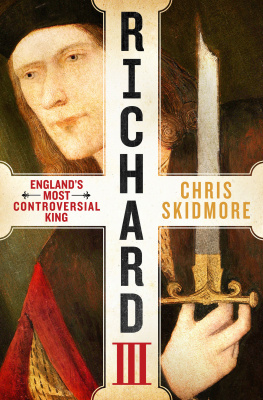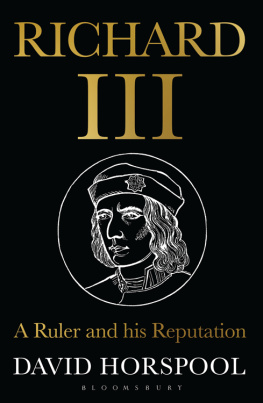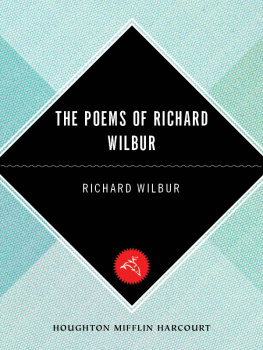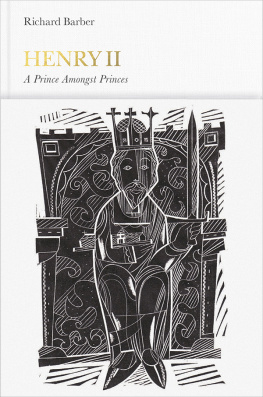THE
LOST
PRINCE
About the Author
David Baldwin is a medieval historian who specialises in the later fifteenth century and who has long been fascinated by the enigma of Richard III. He is much in demand as a lecturer in these subjects, and has devised and taught courses for adults at Leicester Universitys Vaughan College and Northampton Centre for more than twenty years. His acclaimed biography, Elizabeth Woodville: Mother of the Princes in the Tower, was published in 2002.
THE
LOST
PRINCE
THE SURVIVAL OF
RICHARD OF YORK
DAVID BALDWIN

Cover illustrations:
Front: Detail from The Princes Edward and Richard in the Tower by Sir John Everett Millais, 1878 (Royal Holloway, University of London/Bridgeman Art Library).
This edition first published 2008
Reprinted 2013
The History Press
The Mill, Brimscombe Port
Stroud, Gloucestershire, GL5 2QG
www.thehistorypress.co.uk
This ebook edition first published in 2013
All rights reserved
David Baldwin, 2007, 2008, 2013
The right of David Baldwin to be identified as the Author of this work has been asserted in accordance with the Copyright, Designs and Patents Act 1988.
This ebook is copyright material and must not be copied, reproduced, transferred, distributed, leased, licensed or publicly performed or used in any way except as specifically permitted in writing by the publishers, as allowed under the terms and conditions under which it was purchased or as strictly permitted by applicable copyright law. Any unauthorised distribution or use of this text may be a direct infringement of the authors and publishers rights, and those responsible may be liable in law accordingly.
EPUB ISBN 978 0 7524 7992 7
Original typesetting by The History Press
Contents
List of Illustrations
Plates between pp. 128 and 129
Text Illustrations
All illustrations are Geoffrey Wheeler unless otherwise stated.
Table showing the York, Lancaster and Tudor Genealogies
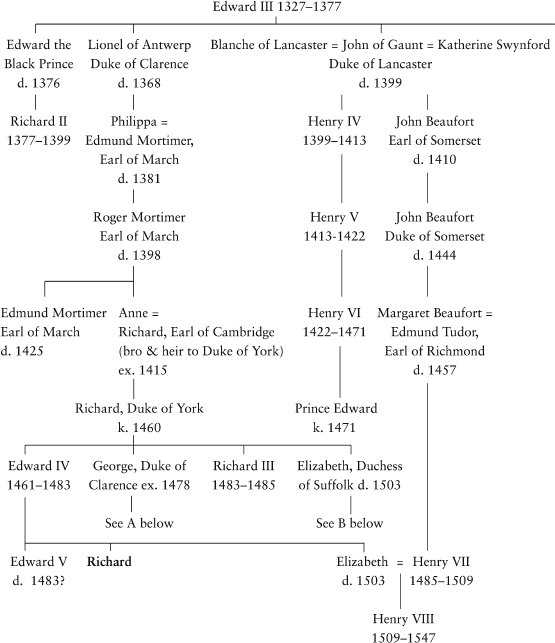
A. Edward, Earl of Warwick (ex. 1499). Margaret, Countess of Salisbury (ex. 1541).
B. John, Earl of Lincoln (k. 1487). Edmund, Earl of Suffolk (ex. 1513). Richard (k. 1525). Other sons & daughters.
Time Chart of the Principal Events of English History during the Period Covered by this Book
14551461
The first phase of the Wars of the Roses. A series of battles fought between King Henry VI, his wife, Queen Margaret of Anjou, and supporters of the House of Lancaster against a faction of the nobility led by Richard, Duke of York, who ultimately claims to be the rightful king.
30 December 1460
Richard of York is killed at Wakefield. His son, Edward, Earl of March, is proclaimed king by Warwick the Kingmaker in March 1461. Edward defeats the Lancastrians at Towton (Yorkshire) on Palm Sunday (29 March) and reigns as Edward IV, the first king of the House of York.
1 May 1464
Edward IV secretly marries Elizabeth Woodville, a daughter of Lord Rivers, to the consternation of many of his subjects who expect him to choose a foreign princess who would bring England a dowry and the goodwill of her country. The endowment of the new queens numerous family is one of several factors that undermines the friendship between the King and the Earl of Warwick.
Autumn 1469March 1470
Warwick stirs up Robin of Redesdales rebellion and the Lincolnshire rebellion, primarily to demonstrate to Edward that he cannot manage without him. His success in the former allows him to execute several senior Woodvilles and even hold the King prisoner for a time; but defeat in the latter obliges him to flee to France, taking with him Edwards brother and his own son-in-law, George, Duke of Clarence.
JulyOctober 1470
In France, Warwick is reconciled with the deposed Queen Margaret, and agrees to invade England on behalf of the House of Lancaster. Edward, deserted by some of his forces (including Warwicks brother, John, Marquess Montagu), is driven into exile in Burgundy. Henry VI is brought out of the Tower of London (where he has languished since 1464) and restored as king.
2 November 1470
Edward, Prince of Wales (King Edwards eldest son and the elder of the Princes in the Tower), is born in sanctuary.
14 March 1470
King Edward returns from exile and, after being reconciled with his brother Clarence, defeats and kills Warwick and Montagu at the battle of Barnet (14 April). He completes his recovery of his kingdom by defeating Queen Margaret and her western Lancastrian army at the battle of Tewkesbury (4 May). King Henrys only son is slain at Tewkesbury, and Henry himself dies mysteriously in the Tower of London soon afterwards.
17 August 1473
King Edwards second son, Prince Richard, is born at Shrewsbury.
28 May 1474
Prince Richard is created Duke of York. At about this time William Caxton produces the first printed book in English, The Recuyell of the Historyes of Troye, in Bruges.
JuneSeptember 1475
King Edward invades France but is bought off with a large annual pension and the engagement of his eldest daughter to the Dauphin at the Treaty of Pecquigny.
1476
William Caxton sets up his printing press at Westminster, and prints The Dictes or Sayings of the Philosophers the following year.
7 February 1477
Prince Richard is created Duke of Norfolk prior to marrying Anne, daughter and heiress of the last Mowbray duke, on 15 January 1478.
18 February 1478
The Duke of Clarence is executed, although his offences, born of frustration and disappointment, do not appear to warrant the ultimate penalty.
9 April 1483
King Edward dies at the comparatively young age of 40. His son, Prince Edward, succeeds as Edward V, but the late Kings surviving brother, Richard, Duke of Gloucester, stages a coup that ensures his own appointment as Protector during the boys minority.
1326 June 1483
Duke Richard accuses William, Lord Hastings, and other lords loyal to Edward V of plotting against him. He is informed by Robert Stillington, Bishop of Bath and Wells, that when King Edward married Elizabeth Woodville he was already precontracted to another lady, and that all his brothers children by Elizabeth are therefore illegitimate and unable to succeed. Elizabeth, who had fled into sanctuary when she received word of Richards first coup, is compelled to surrender Prince Richard to him (16 June), and the boy is sent to join his elder brother in the Tower. Duke Richard is declared the rightful heir of the House of York and becomes king, as Richard III, on 26 June.
October 1483
King Richards ally, the Duke of Buckingham, leads an unsuccessful rebellion to restore Edward V to the throne. The rebels hear a rumour that the young King is no more and transfer their allegiance to Richards Lancastrian rival, the exiled Henry Tudor.
Christmas Day 1483
Henry Tudor swears an oath in Rennes Cathedral to marry Princess Elizabeth of York (Edward Vs and Prince Richards sister) when he is able to defeat King Richard, thereby uniting the two rival branches of the royal family.
August 1485
Henry Tudor invades England with a small force and, remarkably, defeats and kills King Richard at the battle of Bosworth (22 August). Henry becomes king as Henry VII and marries Elizabeth of York in January 1486. Prince Arthur, their first son, is born on 20 September.
Next page
